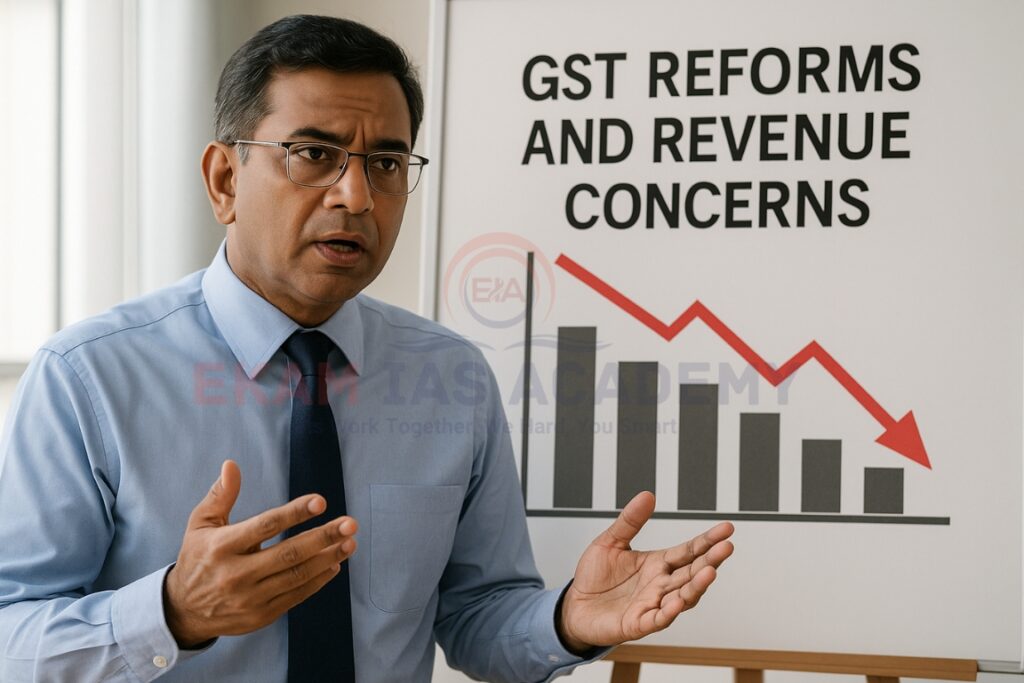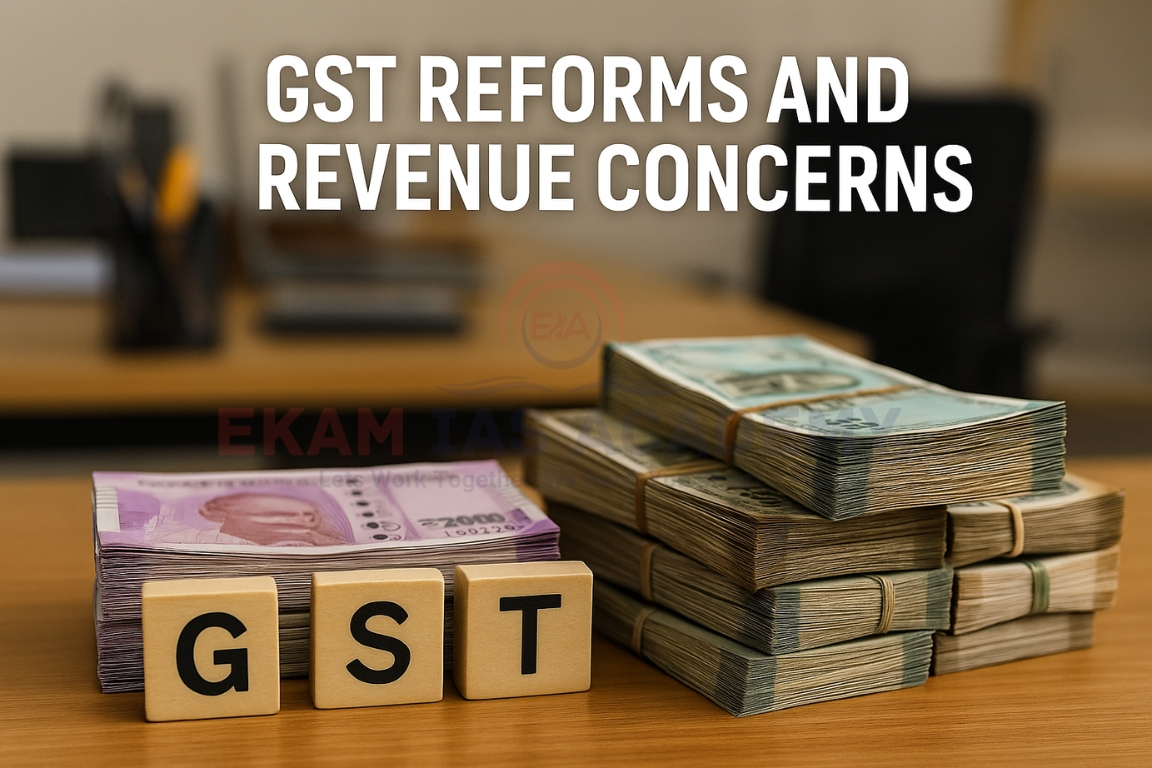The Union Government has proposed major reforms in GST rates and procedures in 2025. These changes aim to reduce tax burden, simplify compliance, and boost domestic consumption, though they may lower short-term revenues.
Background
- GST was introduced in 2017 to create a single indirect tax system across India.
- However, multiple tax slabs, complex procedures, and frequent disputes created challenges for businesses and taxpayers.
- The latest reforms attempt to address these issues and make the system more growth-friendly.
Proposed GST Rate Reforms
- Rationalisation of slabs: 99% of items from the 12% slab shifted to 5%. 90% of items from the 28% slab moved to 18%.
- Objective: Reduce consumer burden and bring similar products under the same tax rate.
- Expected impact: Fewer disputes, less confusion, and improved ease of doing business.

Procedural Reforms
- Simplified registration process for businesses.
- Easier return filing to reduce time and compliance costs.
- Faster refunds to ease liquidity pressures, especially for MSMEs.
- Emphasis on making GST not only rate-friendly but also administratively simple.
Revenue Impact
- RBI had earlier estimated the average GST rate at 11.6%; this will now fall significantly.
- Government anticipates a revenue shortfall initially but expects:
- Higher domestic consumption.
- Wider tax base.
- Lower tax evasion and reduced input tax credit frauds.
- Thus, long-term revenue may stabilize despite the initial dip.
State Governments’ Concerns
- States are worried about loss of revenue due to lower GST rates.
- Already pressing the 16th Finance Commission for a larger share in central taxes.
- Petroleum products (a key revenue source) unlikely to be brought under GST soon.
- States may not openly oppose reforms but could demand compensation from the Centre.
Significance
- These reforms, combined with changes in income tax slabs and the new Direct Tax Code, make 2025 a landmark year for India’s tax system.
- By prioritising consumption-driven growth over revenue concerns, the government signals a pro-growth, reform-oriented approach.
Conclusion
GST reforms underline the Centre’s willingness to trade short-term revenue for long-term growth. Balancing consumer relief, business ease, and state concerns will determine the success of this bold tax reform agenda.





